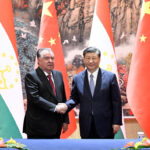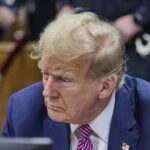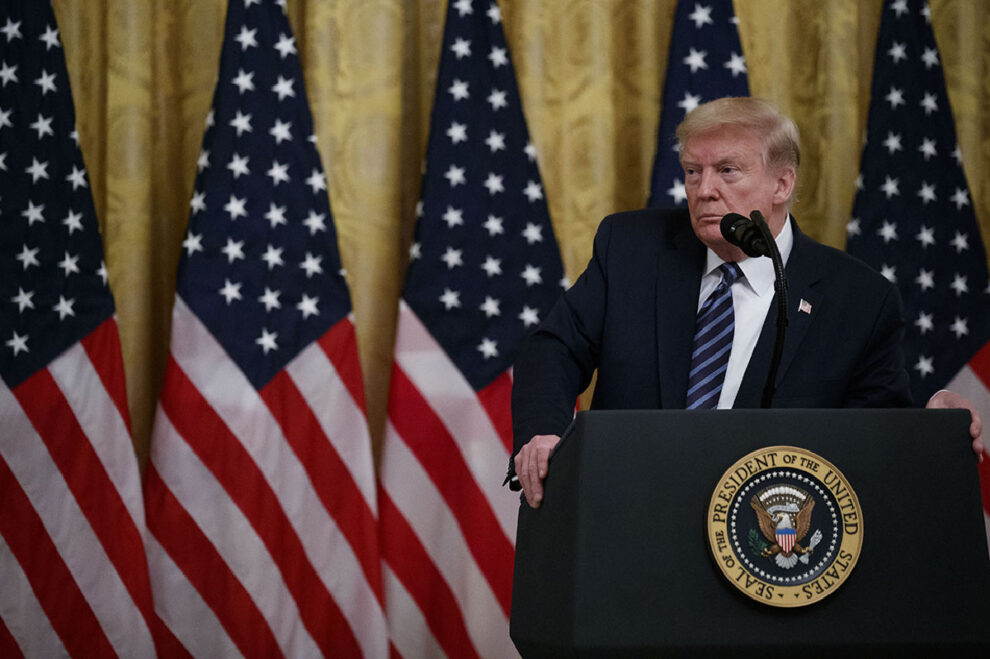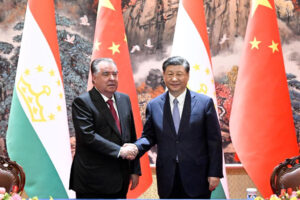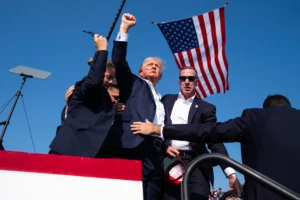Ultimately, Biden and Trump offer competing visions that both strive for one goal – a stronger, more prosperous and unfettered America. Biden proposes to do this by strengthening and adapting the current global security and economic order while Trump proposes the disruption of the same. Donald Trump is proposing more internal control at the cost of less foreign influence in the long term. Pax Americana is still strong but a Trump Presidency may very well hasten what is likely a long period of reconfiguration of economic and political relationships in adaptation to our world as is.
The world looks on with bated breath, awaiting the outcome of the 2024 US elections. Two opposite visions for America’s place in the global security and economic order is being presented on docket.
On one hand, President Biden’s foreign policy has been one of America exerting its strength to secure for itself a second spring as the preeminent global hegemon, confidently embracing the world unto itself and extending a new era of Pax Americana, adapted for a new age. Externally, we see exertion of America’s formidable strength in traditional alliance structures in Europe and the Middle East, signaling a deep determination to retain decisively the leadership of both spheres. In the Asia Pacific, American policy seeks to exclude China from the global community while keeping it down. In contrast to President Obama, who sought to integrate the Pacific Rim in a form akin to the European and North American blocs, President Biden instead seeks to anchor Japan and South Korea firmly in the American political and economic sphere, eyeing, no doubt, North Asia’s key role in the global tech cycle and its mastery of coveted technology. Further west, Biden’s actions seek to shift the flow of capital, thereby propping up India as an alternate version of China 50 years foregone, as the source of labor supply. Domestically, President Biden is promoting manufacturing investment, workers’ rights, and the integration of the American economy to reflect the new global reality. His vision of America 2.0: a continuation of and invigoration of perhaps an even more exuberant and inclusive consumer economy, with the inflow of capital and talent powering new heights in innovation and technological transformation.
On the other hand, Donald Trump touts a radically different version of America. The vision he has proposed is one of an isolationist America reclaiming a halcyon past. To reclaim this vision, he proposes reverting to an essentially pre-WWII America; keep outsiders out, drive wealth creation by internal resource extraction while keeping out imports (broad-based tariffs) and bringing down the deficit by cutting military commitments. Instead of seeing itself as the miliary linchpin of global order, Trump’s America sees itself as self-contained power willing to extend protection for pay. Trump’s vision envisions more concentrated and rent-seeking model of economic growth, driven by the major resource sectors and self-sufficiency in production at the expense of turning away new forms of technology (e.g. electric batteries). Perhaps Trump’s vision of America hearkens to the Gilded Age, when industrialization created vast fortunes in the real estate and primary industrial sectors. Donald Trump and his supporters believe that this will lead to a stronger, more focused America with autonomy to flex its muscle on selective issues.
Ultimately, Biden and Trump offer competing visions that both strive for one goal – a stronger, more prosperous and unfettered America. Biden proposes to do this by strengthening and adapting the current global security and economic order while Trump proposes the disruption of the same.
To understand the applicability of the Trumpian vision, let us first examine the economic order of America today, which is vastly different from the America of 1900. The Global Age has begotten dominance of the domestic consumer economy with its global links, the Information Age, and the huge demographic shifts brought about by half a century of market-based labor triage. Pax Americana and the USD system has underpinned the vast international success of American corporations and their repatriated wealth, the steady inflows of foreign capital, the import of much cheaper foreign-made goods, and inward movement of immigrants from all parts of the world who have continually powered the middle and lower ranks of American corporations and industries. These factors have been foundational to building and maintaining the lifestyle enjoyed by Americans of older European origins. Most importantly, the structural engines of wealth generation is no longer tied to land, labor, and oil alone but also to the information, knowledge, scientific and digital economies which by nature are urban-centered and global in scope. All in all, the economic landscape of America is more diverse than ever.
Second, let us compare America’s place in the global order today compared to 1900 and 1945. In 1900, at the height of the European Imperial Age, America was expanding at the expense of weaker neighbors. It marked out its sphere of influence over the entirety of Latin America and pushed its influence into the Pacific sphere – over Hawaii, the Philippines, and to a lesser extent, Japan. In 1945, America rode ascendant to dominance in the vacuum of destruction wrought upon most of the known world in the cataclysm of WWII. Europe was destroyed. The Soviet Union was decimated and starving. China and Korea had narrowly escaped utter destruction from the ravages of a century of economic imperialism and internal turmoil, capped off by a ruthless and brutal invasion by neighboring Japan, which was itself brought to its knees. India had yet to emerge from three centuries of colonial rule.
Today, the world is different. The peaceful Global Age presided over by America has enabled stability in Europe, prosperity in Asia, and the emergence of Africa, the Middle East, and many other crevices and corners of the world with greater confidence in their own identities and interests. China has an ever-increasing economic footprint in the world and is keen to play a stakeholder role in the global world order as a respected partner.
The key challenge for Biden’s vision of the world order is if it can successfully exclude and stymie a burgeoning China, with its 1.4bn people, economic base, and ambitions for technological innovation.
The core question for Trump’s vision of the reconstituted America is whether it is fit for purpose for America’s current place in the world and if not, whether it will catalyze a reconstitution of the global order. Will the withdrawal of the American military from the world and the American consumer from the global market also catalyze a withdrawal of foreign capital, immigrant labor, and even geopolitical loyalty? Can the domestic consumer sustain the tick up in goods prices? Can services become affordable without the influx of migrant or qualified immigrant workers who are paid less than their native counterparts?
My hazard is that the American global order will remain robust, at least in the medium term. The current global order is too entrenched and America’s advantages too strong to be otherwise. The technology and knowledge industries are resilient enough on their own to sustain a level of policy neglect. Oil and gas and tariffs will revitalize unloved industries. The consolidation of the American shale sector is already leveling up the power base of big oil.
But on the global stage, Trump’s isolationist turn will likely mean greater maneuvering space for other states. Allies will be implicitly encouraged to diversify relationships. Trump’s strangely cozy relationship with Russia may mean a negotiated peace in Ukraine and return to the status quo. Meanwhile, China will feel a level of trepidation alongside relief at what may be a reprieve from the suffocating clampdowns of the Biden era, and a greater level of openness from the global audience.
The centers of economic and political influence have dispersed across the globe since 1945. If this framework of analysis correct, then the Trumpian vision chooses internal control at the cost of less foreign influence in the long term. Pax Americana is still strong but a Trump Presidency may very well hasten what is likely a long period of reconfiguration of economic and political relationships in adaptation to our world as is.
Disclaimer
This article does not reflect the views or opinions of any organizations affiliated with the author nor does it reflect any political affiliation or contribution by the author or any of her affiliated organizations. The article should not be construed as investment advice offered by the author or any of her affiliated organizations and is meant only to be enjoyed as an academic analysis contributing to the free exchange of ideas in the discipline of international relations.
Source: Modern Diplomacy


